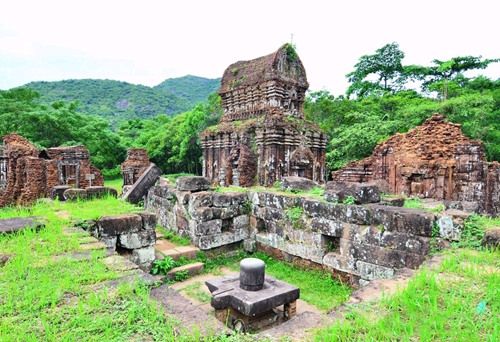The towers are now ready to welcome visitors on the upcoming holidays from April 30 (the southern liberation and national reunification day) to May 1 (international Labour Day).
The upgrade work to restore Towers K, H, and A is being carried out over five years from 2016 to 2021, costing over 60 billion VND (2.58 million USD), including over 50 billion VND sponsored by the Indian government and the remaining from the Vietnamese Government’s corresponding capital.
While excavating Towers K and H, experts discovered many valuable artefacts such as stone statues of the human form and lion heads, tower spiers, and other architectural objects dating back to the 11th and 12th centuries.
    |
 |
|
Temples at My Son Sanctuary in central Quang Nam province |
The management board of the My Son world cultural heritage site is coordinating with Indian experts to prepare all necessary procedures for the excavation and restoration of Tower A.
Quang Nam province has been hosting a number of activities, such as photo exhibitions and scienctific workshops to preserve and promote the heritage values of the My Son Sanctuary.
Once the religious and political capital of the Champa Kingdom, My Son Sanctuary is located within a hilly landscape in Duy Phu commune, Duy Xuyen district, about 70 km southwest of central Da Nang city and 40 km from Hoi An city.
It is comprised of eight groups of 71 monuments built throughout the 7th to 13th centuries.
The first construction of My Son dates back to the 4th century under the reign of Bhadravarman for the worship of God Shiva-Bhadresvara. Yet later on, the temple was destroyed.
At the beginning of the 7th century, King Sambhuvarman had it rebuilt and rebaptised Sambhu-Bhadresvara. Each new monarch came to My Son after his accession to the throne for the ceremony of purification and to present offerings and erect new monuments, which explains why My Son is the only place where Cham art flourished without interruption from the 7th to 13th century.
Source: VNA